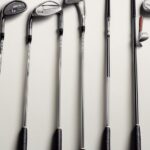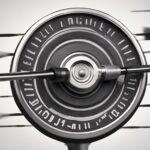- 7 Top Flite Golf Clubs XL for Improved Performance - September 28, 2024
- Top Flite Golf Clubs: Top 5 Reasons to Choose Them - September 28, 2024
- Top 3 Golf Club Fitters for a Perfect Swing - September 28, 2024
You're about to reveal the secret to maximizing your game: getting the right golf clubs tailored to your unique swing characteristics. Club fitting 101 emphasizes the importance of matching club specifications to your swing, guaranteeing peak performance. Key components include club length, affecting posture and swing efficiency, and lie angle, influencing accuracy and consistency. A correct lie angle guarantees proper interaction with the ground at impact, while misalignment leads to poor shot dispersion and increased chances of slices and hooks. By understanding these fundamentals, you'll be well on your way to enhancing your equipment and taking your game to the next level – and that's just the starting point.
Key Takeaways
- Club fitting matches swing characteristics to club specifications, enhancing performance and consistency.
- Correct club length and lie angle are crucial, as misalignment can lead to poor swing mechanics and shot dispersion.
- Custom fitting analyzes swing characteristics to determine ideal club specifications, particularly enhancing consistency with mid and short irons.
- Key performance metrics, such as ball speed and launch angle, are critical for assessing performance and optimizing equipment.
Understanding Club Fitting Basics
When you step into a club fitter's studio, understanding the fundamental principles of club fitting is essential to revealing your full golfing potential.
It's vital to recognize that club fitting isn't just about getting the right club; it's about enhancing your performance by matching your unique swing characteristics to the right club specifications.
Two significant components of club fitting are club length and lie angle. Club length affects your posture and swing efficiency, and getting it wrong can lead to improper swing mechanics. On the other hand, lie angle influences the accuracy and consistency of your iron shots, as it determines how the club interacts with the ground at impact.
By understanding the importance of these factors, you'll be better equipped to work with your club fitter to identify the ideal club specifications for your game.
Importance of Lie Angle Alignment
When you're fitted with clubs that match your swing, you'll notice a significant improvement in your game.
Now, you're probably wondering how to guarantee proper club alignment, and that's where the lie angle comes in – it's vital to get it right to achieve consistent ball flight.
As you'll soon discover, the lie angle's impact on shaft angle and ball trajectory effects can make all the difference in your shot accuracy.
Proper Club Alignment
Getting the lie angle right is essential, as it sets the foundation for proper club alignment. A misaligned lie can throw off your entire swing. When you're fitted with the correct lie angle, you'll be able to maintain a consistent swing path, resulting in more accurate shots.
A lie angle that's too upright or too flat can lead to poor shot dispersion, making it difficult to achieve consistent accuracy and distance, especially with mid and short irons.
To achieve a proper swing, you need to verify that the lie angle is aligned correctly. This is where custom fitting comes in. By analyzing your individual swing characteristics, posture, and swing path, a fitter can determine the ideal lie angle for you.
A properly fitted lie angle can greatly improve consistency in your iron shots, as it helps align the clubface correctly at impact, reducing the chances of slices and hooks. With the right lie angle, you'll be able to maintain a smooth, consistent swing, leading to better overall performance.
Shaft Angle Impact
By optimizing the lie angle, you're able to control the shaft angle, which in turn has a direct impact on the clubhead's interaction with the turf, greatly affecting the overall trajectory and accuracy of your iron shots.
When the lie angle is correctly aligned, you'll maintain a consistent swing path, ensuring the club interacts with the ground as intended. This, in turn, leads to more precise shot dispersion and improved overall performance.
Custom fitting for lie angle is essential, as individual swing characteristics can greatly affect how the club interacts with the ground during the swing.
A proper lie angle helps maintain the correct posture and swing path, critical for achieving ideal ball flight and trajectory.
Adjusting the lie angle can enhance your performance, particularly with mid and short irons, as it directly influences the club's interaction with the turf at impact.
Ball Trajectory Effects
How do you know if your lie angle is properly aligned? Your ball trajectory will tell you, as an incorrect angle can cause shots to deviate considerably from your target line.
When your lie angle is off, you'll notice your ball flight patterns change. A flatter lie angle will produce a lower trajectory, while a more upright lie angle will result in a higher trajectory. This is because the lie angle affects the clubhead's angle of attack, influencing the ball's launch conditions.
As you experiment with different lie angles, you'll see how it impacts your shot dispersion. A properly fitted lie angle will help you hit more consistent shots, with the ball flying straighter and farther. Conversely, an incorrect lie angle will lead to wayward shots, making it challenging to hit your target.
By paying attention to your ball trajectory, you can fine-tune your lie angle to optimize your ball flight. Remember, the right lie angle is essential for achieving precision and control, especially with your mid and short irons.
Club Length and Posture Considerations
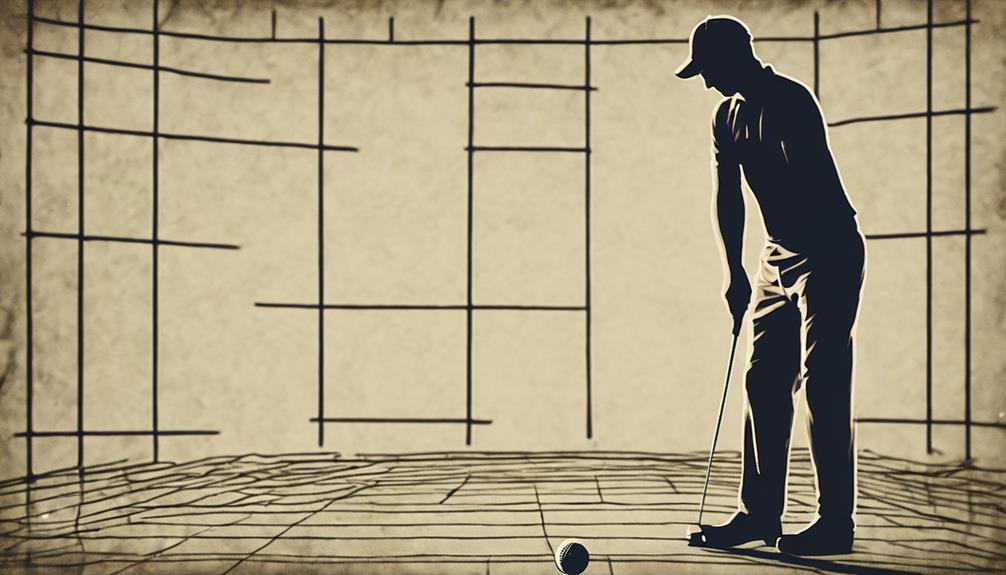
When you're fitted with clubs that are the right length, you'll maintain a proper posture throughout your swing, ensuring a more efficient shaft angle.
Conversely, if your clubs are too long or too short, it can throw off your entire swing plane, leading to inconsistent results.
Shaft Angle Impact
Properly fitted clubs guarantee your posture aligns with the perfect shaft angle, as clubs that deviate from your ideal length force compensations that can throw off your entire swing.
When your clubs are the right length, you'll maintain a consistent posture, allowing for a more efficient swing plane and maximizing your distance and accuracy. Conversely, clubs that are too long or too short can lead to poor posture, resulting in reduced swing speed and performance.
In golf club fitting, shaft flex plays an essential role in achieving the perfect shaft angle. A shaft that's too stiff or too flexible can disrupt your swing dynamics, leading to inconsistent shots.
As you swing, the shaft flexes, and its angle at impact greatly affects the ball's flight. With the right shaft flex, you'll achieve a more consistent ball flight, and your shots will become more predictable.
Proper Posture Essentials
Your club length greatly impacts your posture, as it directly influences the shaft angle and your overall athletic stance during the swing.
If your clubs are too long, you'll struggle to maintain proper shaft angles, while clubs that are too short will have you hunching at impact.
To achieve proper posture, it's important to take into account your height and wrist-to-floor measurements when selecting the right club length. This guarantees an athletic stance that promotes efficient swing mechanics and generates clubhead speed.
Dynamic fitting, which takes into account your swing characteristics and posture, can greatly enhance your performance by tailoring the club length to your individual needs.
By adjusting your club length, you can expect improvements in accuracy and distance, as it allows for a more natural swing path and better alignment at address.
Remember, ideal club length is vital for achieving a balanced posture, which is key for consistent ball striking.
Get your club length right, and you'll be well on your way to mastering your swing.
Foresight Sports Technology Advantages
With Foresight Sports technology, you can tap into the power of advanced launch monitors that accurately capture swing dynamics and ball performance metrics, providing essential data for personalized club fitting. This technology allows fitters to assess critical parameters such as ball speed, launch angle, backspin, and sidespin, enabling precise adjustments tailored to individual swing characteristics.
In the fitting process, Foresight Sports devices improve the experience by offering real-time feedback, allowing you to make informed decisions about equipment changes based on actual performance data. The integration of data-driven insights from Foresight Sports enhances the fitting process, revealing areas for improvement that traditional methods may overlook, ultimately leading to better on-course performance.
Necessity of Custom Fitting Experience
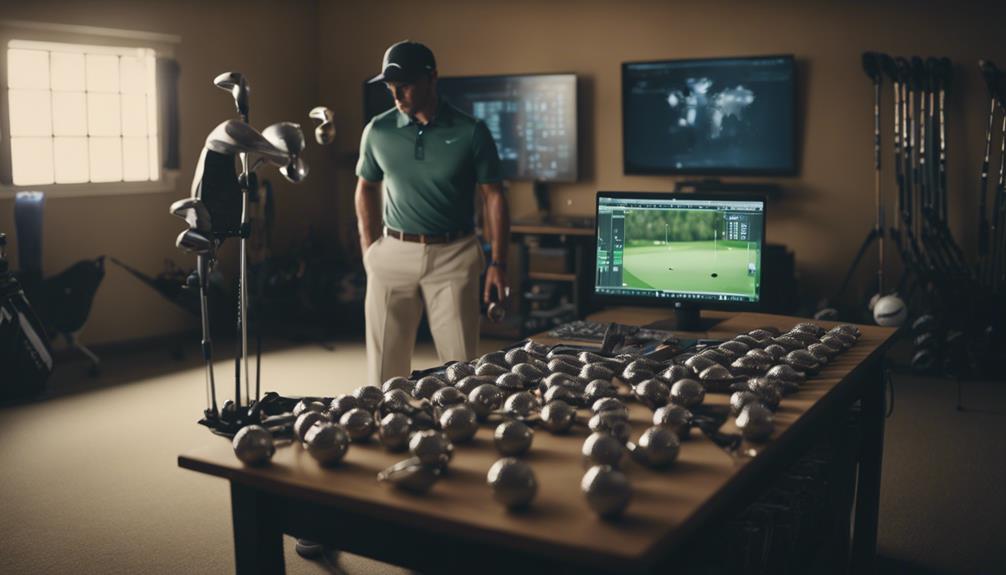
When you're fitted for golf clubs, you're not just getting a standard set – you're getting equipment tailored to your unique swing characteristics.
This customization is essential, as it directly impacts your accuracy, consistency, and overall performance on the course.
Importance of Customization
Getting fitted for custom golf clubs is no longer a luxury, but a necessity, as it guarantees your unique swing characteristics are matched with the ideal club specifications, leading to unparalleled accuracy and consistency in ball flight.
When you get fitted, you'll discover that pre-defined fitting charts often fail to accommodate your individual needs. That's why using launch monitors during the fitting process is essential to get precise measurements of your launch angle and other swing dynamics.
This data-driven approach reveals specific areas for improvement, allowing for tailored adjustments in club specifications that enhance your overall performance. By getting the right shaft, you'll experience a significant improvement in your scoring potential.
Advanced fitting tools, like those from Foresight Sports, provide valuable insights that facilitate a more personalized fitting experience. With custom-fit clubs, you'll play with more confidence and effectiveness on the course.
Accurate Measurements Matter
To reap the full benefits of custom fitting, you must prioritize accurate measurements, as even slight deviations in lie angle, club length, or other specifications can considerably impact your overall performance.
Inaccurate measurements can result in misalignment, leading to poor shot dispersion and compromised accuracy. During a custom fitting session, it's crucial to assess various specifications, including shaft flex and torque, to guarantee the selected clubs match your unique swing profile.
Utilizing launch monitors and advanced fitting technology enables fitters to gather precise data on your swing dynamics and club performance. This data-driven approach allows for informed customization decisions, tailored to your individual needs.
By prioritizing accurate measurements, you can optimize your club's performance, leading to improved consistency and overall golfing experience.
Driver Fitting Expectations and Process
You'll likely test multiple driver heads during a fitting, each tailored to address specific aspects of your Swing DNA, including shot shape correction, forgiveness, and spin rate. It's crucial to set realistic expectations, as considerable distance gains aren't guaranteed. Success is defined by hitting the ball both far and straight. Bring your current driver as a baseline for comparison, allowing the fitter to assess actual improvements and guarantee the new equipment outperforms your existing clubs.
| Adjustment | Effect on Launch | Effect on Spin |
|---|---|---|
| Shaft Length Increase | Higher Launch | Lower Spin |
| Movable Weight Adjustment | Variable Launch | Variable Spin |
| Shaft Profile Change | Lower Launch | Higher Spin |
| Custom Fitting | Enhanced Launch | Enhanced Spin |
Keep in mind that movable weights can be adjusted to customize shot shape, while shaft length and profile greatly influence launch and spin. After the fitting, acknowledge that performance improvements can be achieved without new clubs, as custom adjustments to existing clubs can enhance fit and overall results. By understanding these factors, you'll be better equipped to find the ideal driver fit for your unique Swing DNA.
Performance Metrics for Success
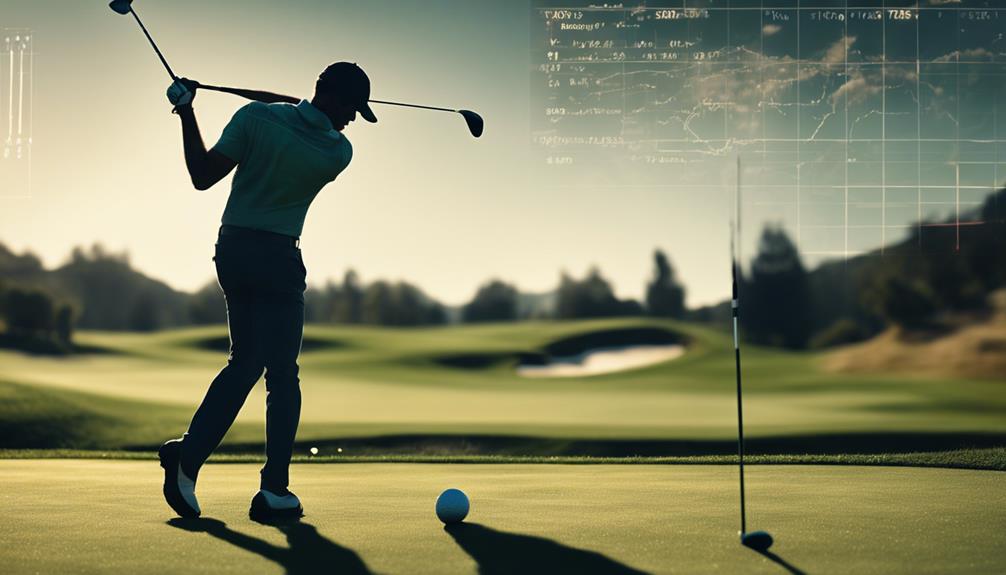
By tracking key performance metrics, including ball speed, launch angle, and backspin, you can pinpoint how equipment specifications impact your distance and accuracy on the course.
Achieving ideal launch parameters is essential, as each golfer's perfect launch angle and backspin rate vary based on individual swing characteristics. Sidespin is another significant metric, indicating your face angle at impact and revealing shot shape tendencies. This information is critical for developing correction strategies during fittings.
Consistency metrics, such as standard deviation and dispersion, are often more important than raw distance. Tighter dispersion can indicate better overall performance, even without significant distance gains.
By understanding how club specifications – like shaft flex, length, and lie angle – affect performance metrics, you can make more informed decisions during the fitting process. By analyzing these metrics, you'll be able to identify areas for improvement and enhance your equipment to match your swing characteristics.
This data-driven approach will help you access your full potential and take your game to the next level.
Equipment Comparison and Testing
With a clear understanding of your performance metrics, it's time to put new equipment to the test, comparing its capabilities to your current driver and evaluating how it can help you improve your game.
When comparing equipment during a fitting, it's crucial to bring your current driver as a baseline, allowing for a direct assessment of improvements in performance metrics.
Testing new clubs should be conducted in realistic conditions, moving off the driving range to simulate actual golf course scenarios for more accurate performance evaluation.
Utilize launch monitors during fittings to analyze key performance indicators like ball speed, launch angle, and backspin, providing data-driven insights for equipment comparison.
Focus on metrics such as consistency and dispersion rather than just distance to guarantee that new equipment outperforms existing clubs, justifying the investment.
Technical Adjustments for Optimal Fit
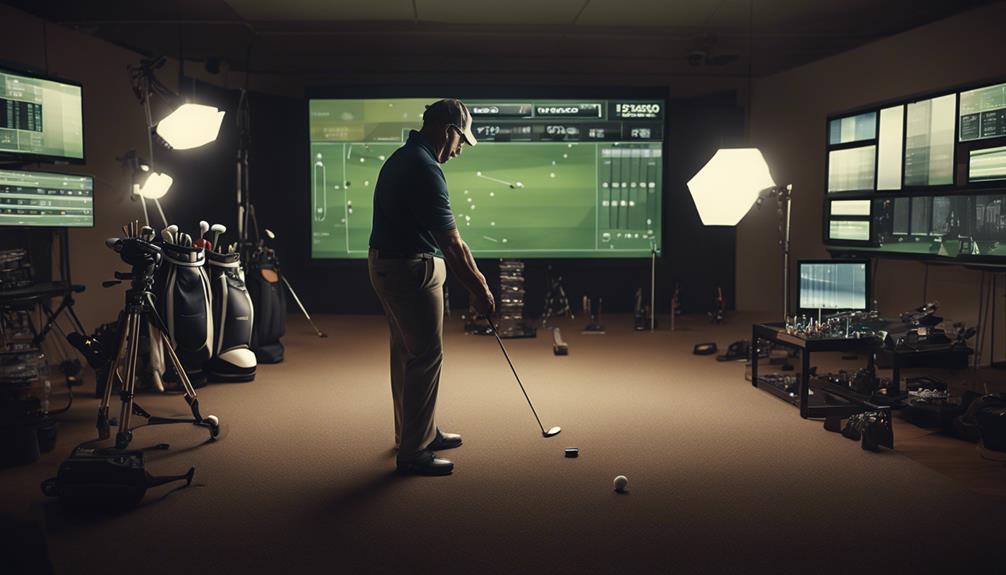
Fine-tune your golf club setup by exploring technical adjustments that can enhance your fit, as even slight tweaks can greatly impact performance metrics and overall gameplay.
One essential aspect is the fitting location of adjustable weights in your driver. By placing weights in the heel or toe, you can influence shot shape, promoting draws or fades based on your swing tendencies.
In addition, the length of your shaft is critical, as each extra inch can increase distance by approximately four yards, but also raises dispersion by 10%. However, be cautious not to compromise control for added length.
The profile of your shaft also plays a significant role in tuning launch angle and spin rate. It's often more influential on accuracy and dispersion than on the actual launch and spin metrics themselves.
Moreover, don't overlook the importance of grip size and swing weight fitting, as these factors greatly impact feel and balance during your swing.
Fitter Selection and Misconceptions
When selecting a fitter, you must prioritize their reputation and expertise, as the quality of your fitting experience can vary greatly depending on the location and the fitter's skill level. It's vital to rely on word-of-mouth recommendations and the fitter's reputation to guarantee effective fittings.
One common misconception is that softer shafts bend backward at impact; in reality, shafts bend forward, which can greatly affect fitting outcomes. Another misconception is that the shaft is the primary factor influencing performance, when in fact, the golfer's swing technique plays a much larger role. Additionally, perceptions regarding face angle and visual cues can lead to incorrect fittings, highlighting the importance of precise measurements and data analysis for accurate club customization.
It's also important to recognize that each golfer's needs are unique, and one-size-fits-all approaches often don't yield the best results. A personalized fitting session is necessary to address your specific requirements.
Club Specifications and Performance Data
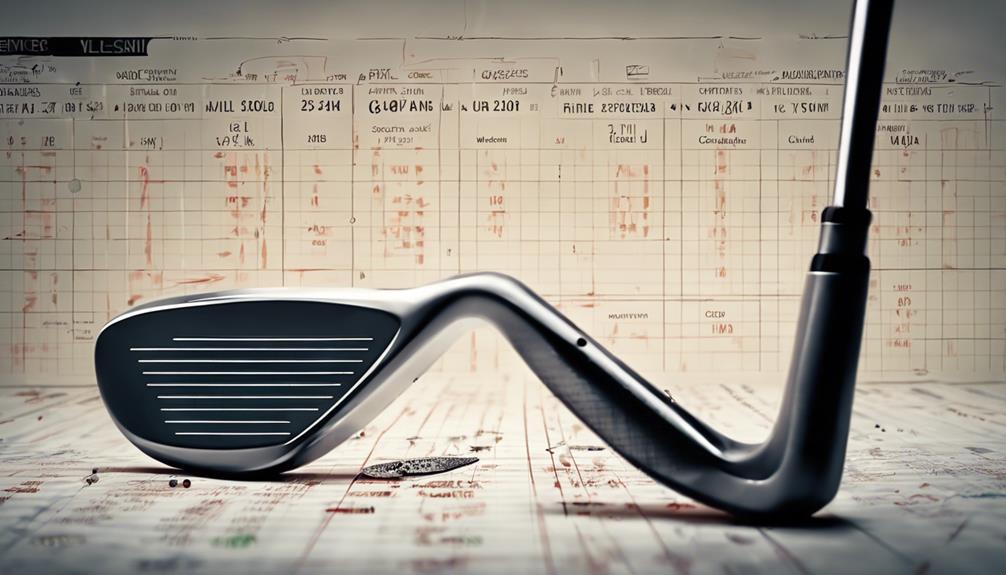
You'll find that getting the right club specifications is essential to releasing your full potential, as they directly impact your performance on the course. When it comes to optimizing your game, understanding the intricacies of club specifications is vital.
| Club Specification | Impact on Performance | Importance Level |
|---|---|---|
| Length | Distance, accuracy, and feel | High |
| Lie Angle | Mid and short iron accuracy | High |
| Shaft Flex and Torque | Distance, feel, and swing tempo | Medium |
As you work with your fitter, you'll discover how these specifications intersect to influence your game. For instance, a shaft that produces the right flex and torque can help you maintain a consistent swing tempo, leading to more accurate shots. Meanwhile, getting the lie angle just right can make all the difference in your mid and short iron play. By fine-tuning these specifications, you'll be able to optimize your launch conditions, ensuring you're getting the most out of your driver and irons.
Advanced Fitting Techniques and Insights
To take your game to the next level, advanced fitting techniques and insights can help you reveal the full potential of your clubs.
Starting with dynamic lie fitting, this technique precisely aligns the clubhead's center of gravity with the energy travel path. This is vital for irons, as it enhances performance and accuracy.
You'll also benefit from understanding the impact of graphite shafts, which allow for better control over specifications, resulting in improved feel and performance. Moreover, the total weight of the club greatly influences feel and distance, making it essential to maintain a proper swing path throughout the swing.
In addition, grip size has a major impact on feel and can moderately influence accuracy, highlighting the importance of personalized fitting for comfort.
When it comes to putter fitting, consider your skill level and the style of putter that suits you best.
Finally, understanding the Moment of Inertia (MOI) is beneficial, as higher MOI reduces club twist on off-center hits, although it doesn't correct face alignment.
Frequently Asked Questions
How Do You Size Golf Clubs for Your Height?
When sizing golf clubs for your height, you'll want to take into account your wrist-to-floor measurement to guarantee proper posture and swing mechanics. Typically, for every inch of height, you'll add 0.5 inches to the club length for maximum performance.
What Do You Bring to a Golf Club Fitting?
'When you're ready to access the fitting benefits, don't show up empty-handed! Bring your full set of clubs, preferred golf ball, and glove to guarantee the perfect equipment selection, tailored to your unique swing and style.'
How Do I Fit Myself for Golf Clubs?
You fit yourself for golf clubs by employing self-assessment techniques, measuring height, wrist-to-floor distance, and swing characteristics, then making equipment adjustments based on shaft flex, lie angle, and performance metrics to optimize your game.
How Many Strokes Will a Club Fitting Save?
When you get fitted for golf clubs, you can expect to save 3 to 5 strokes per round due to improved swing accuracy and consistency, plus an additional 1 to 2 strokes from distance increases of 10 to 15 yards.
Conclusion
You've finally grasped the fundamentals of golf club fitting, and your game is about to skyrocket!
With a custom-fit set, you'll be hitting like a pro in no time.
Remember, a proper fit is like finding the Holy Grail – it's the key to revealing your full potential.
Don't settle for mediocre; invest in a fitting experience that will transform your game.
With the right tools and expertise, the possibilities are endless, and your opponents will be green with envy!


